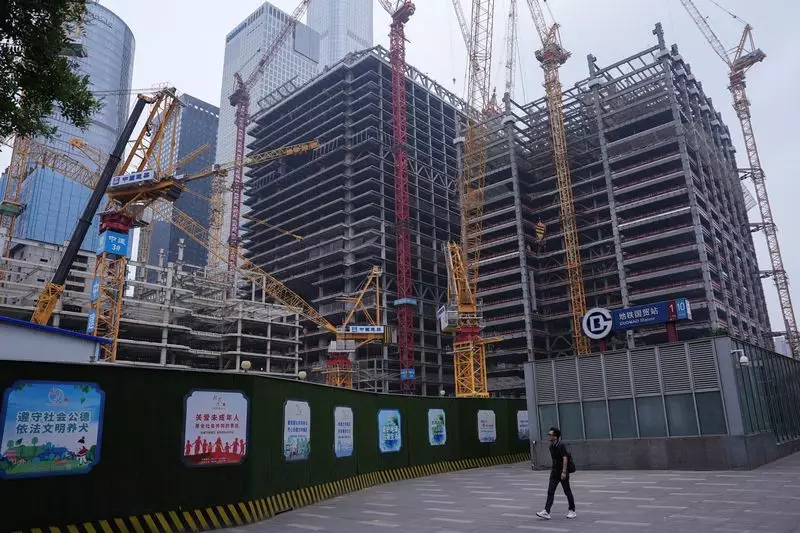China, the world’s second-largest economy, finds itself at a crossroads, grappling with a blend of stagnation, deflationary pressures, and a struggling property market. Recently, Finance Minister Lan Foan’s announcement regarding Beijing’s intentions to “significantly increase” debt in order to revive the economy has sparked discussions among investors and analysts alike. While the commitment to tackle government debt, provide subsidized support to low-income families, and bolster the property sector signals a shift in approach, it lacked crucial specifics that would facilitate a clearer understanding of the government’s fiscal roadmap.
Despite the upbeat rhetoric, the absence of concrete figures disappoints investors who were hoping for a robust fiscal stimulus. The lack of a specified monetary amount left many puzzled about the scope of these efforts. Vasu Menon, an investment strategist at OCBC in Singapore, aptly encapsulated the sentiment when he remarked that the finance minister’s statements were “strong on determination but lacking in numerical details.” Investors were left waiting for a more comprehensive fiscal strategy that would lend credibility to the recent stock market rally, which had seen a significant upturn—25% in just a matter of days.
Without clear indicators on the stimulus’s financial magnitude, uncertainties remain. This sense of ambiguity could hinder the longevity of the stock market’s resurgence, leaving market participants grappling with both hope and anxiety.
Dismal economic data in the preceding months has heightened concerns regarding China’s long-term growth trajectory. The government has projected a modest growth target of around 5% for the year, but there are growing fears that this target may not be met, especially given the anticipated weak economic indicators for September. While officials maintain “full confidence” in meeting the 2024 target, market performance often reflects a more cautious outlook. The Politburo’s meeting in September led to a surge in Chinese stocks, underscoring the significant market volatility driven by expectations of renewed government support.
However, as optimism wanes in the wake of vague policy outlines, investors are left questioning the sustainability of this optimism and whether China’s economic recovery is genuinely on the horizon.
While the Chinese government has hinted at plans to issue special sovereign bonds estimated at around 2 trillion yuan, or approximately $284 billion, the application of these funds remains key to understanding the overall impact of the stimulus. Unpacking the specifics reveals that half of these funds are earmarked for addressing local governmental debts, while the other portion supports consumer purchases and aids families with children. This rather prescriptive approach focuses on tackling the immediate monetary challenges while leaving unaddressed the deeper structural issues facing the economy.
Additionally, there is speculation that capital injections worth up to 1 trillion yuan may flow into the largest state banks. However, analysts caution that merely increasing the banks’ lending capacity may not be enough if robust credit demand does not follow.
A concerning aspect of China’s economic strategy is its continued reliance on debt-driven growth through infrastructure investment. As noted by the International Monetary Fund, China’s overall public debt stands at approximately 116% of its GDP. The focus of most fiscal stimulus initiatives over the last decade has been to bolster investments, yet returns on these investments are dwindling compared to economic growth, creating a harmful cycle of rising debt.
Furthermore, deep-rooted challenges such as low household spending—accounting for less than 40% of annual economic output—remain largely unaddressed. With household consumption lagging significantly behind global averages, a reconfiguration of economic policy aimed at fostering domestic demand is vital for sustainable growth.
Lan’s reassurance that local governments have considerable sums available to spend in the last quarter of the year, combined with hints at future reforms to address fiscal gaps and local government debt risks, signify a path forward. However, the need for a more transparent, decisive strategy is crucial if China aims to instill confidence in its economy. As the global economy watches with bated breath, achieving a balance between immediate relief and long-term structural change will ultimately determine the trajectory of China’s economic revival. The upcoming weeks and decisions from China’s legislative body will be critical in clarifying the country’s fiscal future and guiding investor sentiment.

